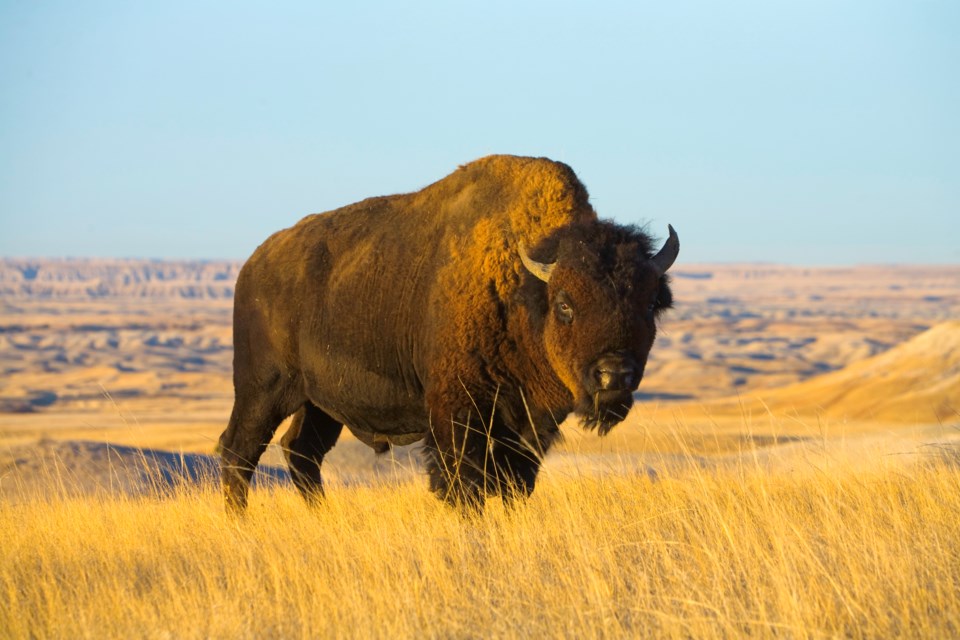SHAUNAVON - A new plains bison herd has been established in The Key First Nation through partnerships between Parks Canada and the Nature Conservancy of Canada.
Steven Guilbeault, Minister of Environment and Climate Change and Minister responsible for Parks Canada, and Jennifer McKillop, Saskatchewan Regional Vice-President for Nature Conservancy of Canada, announced that 40 plains bison were successfully translocated to establish a new herd with The Key First Nation in Treaty 4.
This marks a historic moment for The Key First Nation; a nation that has worked closely with Parks Canada and the Nature Conservancy of Canada to return these culturally significant animals to their traditional lands.
“Our Government has made it a key commitment to support wildlife conservation efforts and the recovery of threatened species, like bison,” said Guilbeault. "Plains bison are an iconic keystone species of the Great Plains and their importance to the cultural, economic and spiritual heritage for The Key First Nation and other Indigenous groups of the Prairies cannot be overstated. It is truly an honour to help this majestic animal survive and thrive once again, and restore this vital cultural heritage of Indigenous peoples of the Northern Great Plains.”
Bison are an iconic symbol of the grasslands and, once numbered in the tens of millions, were relied upon as a staple part of the lives of Indigenous peoples.
The near extinction of bison - culminating in the 1880s due to over-hunting - resulted in economic, spiritual and cultural devastation for Indigenous peoples on the Prairies.
A total of 20 plains bison from Grasslands National Park and 20 from Old Man on His Back Prairie and Heritage Conservation Area in Saskatchewan have been successfully translocated to The Key First Nation’s lands.
“Repatriation of bison is the true cultural revitalization piece for our Anishinaabe people immediately creating unity and togetherness within the community chi-miigwech,” said Christopher Gareau, Councillor for The Key First Nations.
The Key First Nation homeland is part of the territory covered by the terms of Treaty 4 (1874), located in Norquay; part of the Fort Pelly district in eastern Saskatchewan.
The Nature Conservancy of Canada has been working with The Key First Nation since early 2019. At that time, The Key First Nation was in the planning process for establishing a plains bison herd at The Key First Nation, and NCC was in the beginning stages of the development of a long-term management plan for the Old Man on His Back Prairie and Heritage Conservation Area bison herd.
“Partnerships with Indigenous communities are a vital part of NCC’s work as a land conservation organization," said McKillop. “We strive to ensure that collaborating with Indigenous peoples becomes a routine part of our conservation work. We are honoured to help establish a plains bison herd for The Key First Nation.”
For more agriculture stories from southeast Saskatchewan, check out the special publication.




